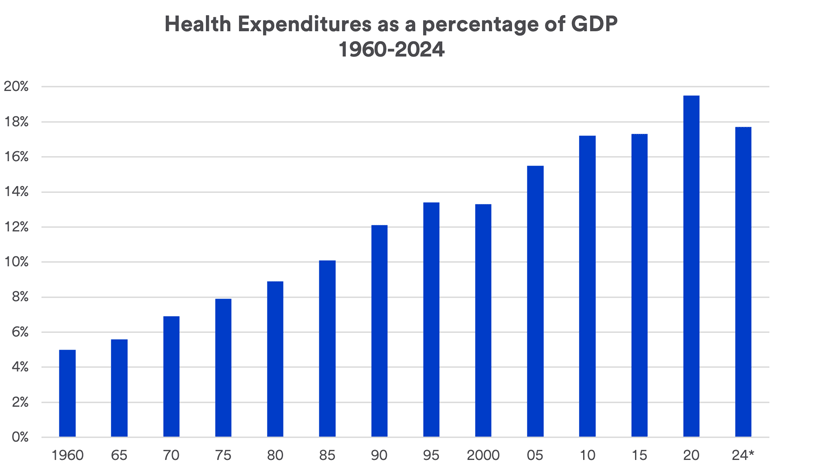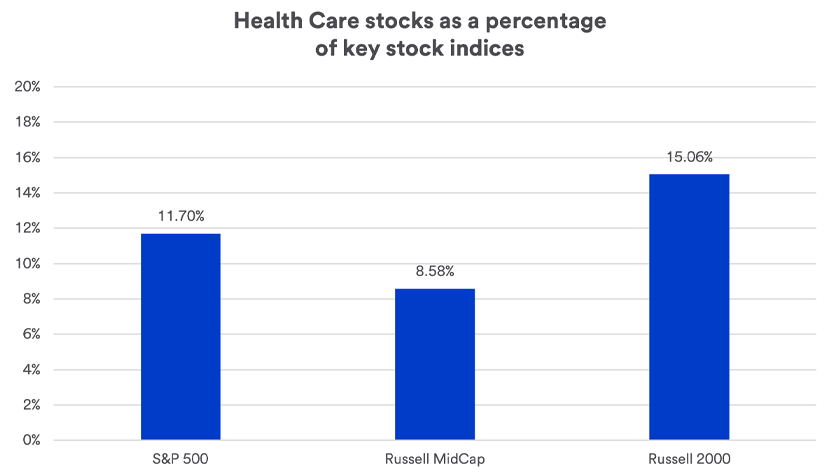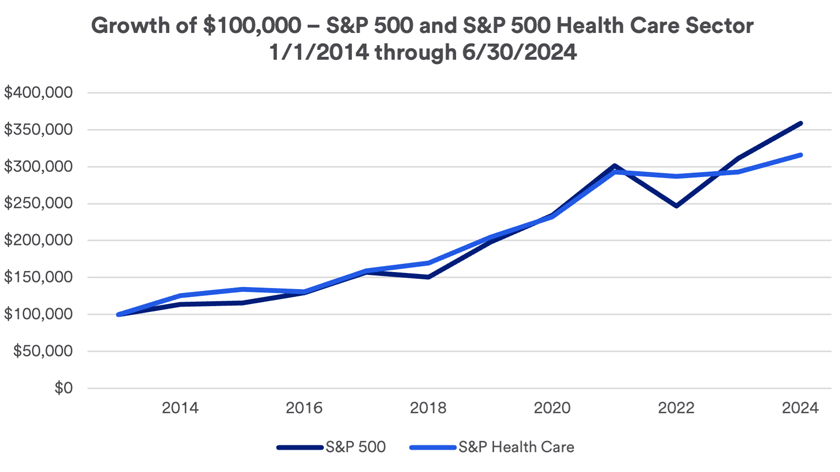“Investors can gain exposure to the healthcare sector by owning the S&P 500 through a passively managed index fund or ETF,” says Haworth. “Investors may also want to take a more selective approach, as the record demonstrates there can be varied performance within the healthcare sector.”
An industry facing cost challenges
One potential constraining factor for the sector is the increasing emphasis placed on controlling healthcare costs. “The aging of our population indicates a strong demand for healthcare services, but there are constraints on what can be delivered,” says Haworth. He notes that since the COVID-19 crisis, elective surgeries have declined significantly. “This was a profitable business for providers, so the slowdown in elective procedures has a bottom-line impact,” says Haworth. “Now that facilities are open and able to conduct procedures, healthcare providers face staffing shortages that may limit the amount of activity they generate.”
To an extent, says Haworth, healthcare must be rationed due to cost constraints. For example, Medicare and other insurers set payment schedules, determining the amount that healthcare providers are reimbursed for various services and treatments. In addition, under terms of the Inflation Reduction Act of 2022, Medicare can negotiate prices for 10 popular drugs paid for, in part, by the program. That can potentially limit revenues to pharmaceutical companies. However, the plan is not yet fully implemented due in part to court challenges by the pharmaceutical industry.
Haworth notes that cost containment, in essence, occurs in other ways as well. “For example, as new drugs come to market, they can provide a more cost-effective means of treating a medical condition.” Haworth says when this occurs, it can be a boon for the company that developed and distributes the new drug, while taking away from the success of other companies that provided now outdated treatments. “While drug and medical technology advancements might appear to be beneficial in raising revenues and earnings for the entire industry,” says Haworth, “the difference between the winners and losers in these situations can be striking.”
Haworth also anticipates that healthcare costs could become a campaign issue in this fall’s presidential election, though no major proposals are yet on the table. “To this point, no candidate seems poised to put further pressure on pharmaceutical prices.”
Healthcare investing
Healthcare plays a critical role in our day-to-day lives. On that basis alone, publicly traded companies that address the demand for healthcare products and services offer intriguing investment potential. Advancements in life-changing drugs and medical devices can significantly enhance our quality of life. They also create potential to generate new revenue and profits for innovative companies that deliver those products.
Nevertheless, the disparate fortunes of healthcare companies, which can change significantly over time, create some challenges for investors. “There are clear opportunities in more active management of healthcare investments given the push-pull dynamic of demand relative to the winners-and-losers system in the pharmaceuticals field,” says Haworth. “For others, relying on a passive management approach, an S&P 500 Index fund or ETF, may be the best way to access the investment potential of the healthcare sector.”
As you explore such investment opportunities, be sure to discuss it with your financial professional. You’ll want to consider how healthcare investments can work within the context of your overall financial plan and investment strategy.







